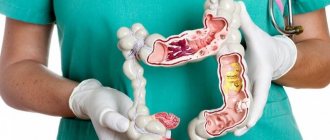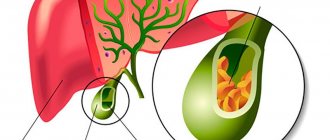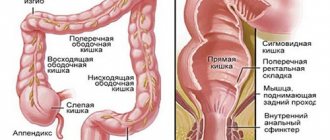Crohn's disease is a chronic inflammatory bowel disease. It is believed to be of an autoimmune nature, developing in the presence of provoking factors. Crohn's disease is characterized by a violation of the absorption function of the intestine, the formation of ulcers on the mucous membrane, as well as intolerance to certain foods. There are no specific medications to treat this disease. Only the use of properly selected therapy can significantly improve the patient’s condition and reduce the frequency of relapses. But for this, treatment must be comprehensive. It is recommended to use traditional methods together with traditional therapy.
General characteristics of the pathology
This disease is considered quite rare. It occurs mainly in men aged 15 to 35 years. The exact cause of its occurrence has not yet been clarified. Only hereditary predisposition and connection with autoimmune pathologies have been proven. In addition, scientists have noticed that the disease appears most often in people with intolerance to grains or dairy products. Against the background of an unhealthy diet with a large amount of proteins, sugars and fat, such patients develop intestinal inflammation.
A connection has also been established between Crohn's disease and the presence of infectious processes in the gastrointestinal tract. Often this disease appears in people who lead an unhealthy lifestyle, have bad habits, and are exposed to frequent stress. People who go hungry for a long time and often experience negative emotions, fear and anger get sick especially often. Therefore, they say about this pathology that it is a disease of hungry and angry people.
The main manifestations of Crohn's disease include inflammation of the intestinal mucosa and the appearance of ulcers on it. The lower part of the ileum or the upper part of the colon is most often affected. The inflammatory process leads to abdominal pain, mainly on the right side, flatulence, and frequent diarrhea. Erosion or ulcers often form on the intestinal mucosa, sometimes they bleed, and then blood appears in the stool. The patient loses his appetite, and because of this and due to large losses of fluid, weight quickly decreases.
Symptoms of Crohn's disease are also associated with impaired absorption of the intestine. This leads to serious deficiencies in many nutrients. Therefore, anemia, dehydration, and electrolyte imbalance develop. In addition, the patient often experiences chronic inflammatory processes in the eyes, mucous membranes and skin. Ulcers, eczema, and abscesses appear. Sometimes the joints are also affected, and back pain is observed.
Diagnostics
Diagnosing Crohn's disease is often difficult. Due to the fact that the symptoms of the disease are nonspecific and the disease is uncommon, the patient may experience pain for years without knowing about the disease. Therefore, if there are suspicions and a family predisposition, it is necessary to consult a doctor and undergo diagnostics - in several stages.
Clinical signs
Like diagnosing any disease, diagnosing Crohn's disease begins with the patient's medical history. The doctor carefully interviews the patient, paying attention to:
- the presence of characteristic symptoms and their intensification at night,
- any symptoms of the eyes, joints or skin,
- the presence of intolerance to any food,
- a history of smoking or the patient's use of various medications (including antibiotics) for a long period.
Based on the obtained clinical picture, the doctor prescribes further examination.
It should be borne in mind that the symptoms of Crohn's disease (abdominal pain, diarrhea, nausea, vomiting, bloating, etc.) may be characteristic of other diseases - for example, irritable bowel syndrome or ulcerative colitis. The main differences between ulcerative colitis are the presence of a urge to defecate with a small volume of stool (tenesmus) and damage only to the colon, in contrast to Crohn's disease, which can affect any part of the digestive tract. With irritable bowel syndrome, there is a connection between exacerbations and psychoemotional factors, the absence of severe pain on palpation of the intestine, and the absence of signs of inflammation.
What examination is necessary if Crohn's disease is suspected?
Unfortunately, it is impossible to make a diagnosis based on the clinical picture alone. Therefore, the patient undergoes tests and, according to the doctor’s indications, undergoes various instrumental studies:
- general and biochemical blood test: identifying signs of inflammation, the presence of deficiencies (protein, various vitamins and microelements, etc. due to impaired absorption in the intestine due to damage to the mucous membrane), assessment of the degree of disease activity (detection of anemia, leukocytosis, thrombocythemia, acceleration of ESR , increased concentration of CRP, hypoproteinemia with hypoalbuminemia, hypokalemia);
- detection of antibodies against Saccharomyces cerevisiae (ASCA) - helps in the differential diagnosis with ulcerative colitis, since these antibodies are detected in Crohn's disease more often than in any other IBD.
- Calprotectin and lactoferrin in feces are signs of exacerbation of inflammatory bowel disease.
Imaging research methods
This is a group of methods where, using various technologies (X-ray radiation, reflection of ultrasonic waves, etc.), it is possible to obtain an image of an internal organ and examine it for the presence of pathologies. Imaging methods include:
- X-ray contrast examination is a method of x-ray examination, which involves the introduction into the body of a special contrast agent that stains the intestinal lumen. The method allows you to identify altered areas of the small or large intestine (single or multiple narrowings, characteristic deep ulcerations giving a “cobblestone” picture, fistulas);
- Ultrasound, CT and MRI. They are used to detect abscesses and fistulas, visualize the intestinal wall, assess its thickness and lumen width. The sensitivity of CT and MRI in diagnosing CD is ≈ 80%. This figure means that this study can detect Crohn's disease in 80 out of 100 sick patients.
Endoscopy
An endoscopic research method is a type of examination in which a flexible tube (endoscope) with a camera at the end is inserted into the natural openings of the body (mouth, rectum), and the image from the camera is displayed on the screen. This allows the doctor to visually assess the condition of the patient’s internal organs. Endoscopic methods include:
- Colonoscopy (Fig. 5), which involves inserting an endoscope through the rectum into the large intestine. Allows you to assess the nature and degree of inflammation in the colon and in the final section of the ileum (taking a large number of biopsies is indicated - using an endoscope and special forceps, a small section of the intestinal mucosa is taken for further examination).
- Capsule endoscopy, when not an endoscope is used, but a capsule with a video camera inside, which the patient must swallow. While passing through the gastrointestinal tract, the camera takes pictures and transmits them to a special device. The method is used when inflammatory changes in the small intestine are suspected, which are inaccessible to conventional endoscopic and radiological examinations.
- Enteroscopy is an examination of the small intestine using an endoscope inserted into the mouth or anus. Among other things, it allows you to obtain biopsies from the small intestine, increase the narrowing of the intestine, remove the retained endoscopic capsule and stop bleeding (all this is done by introducing special instruments into the endoscope channels).
All these methods require preliminary preparation of the patient: refusing to eat for 8 hours or more, using laxatives or enemas.
Figure 5. Performing endoscopy. Source: Mayo Foundation
Histological examination
When performing endoscopic examinations - colonoscopy, enteroscopy - a biopsy of a section of the intestine is taken using an endoscope and examined under a microscope. Studying the biopsy cells allows us to assess the presence of signs of inflammation and the degree of its activity.
Microbiological examination of stool
The patient's stool is cultured on nutrient media to determine the type of bacteria living in the intestines.
With chronic inflammation in the intestines, favorable conditions are created for the development of pathogenic microflora. Bacteria are the direct cause of the development of purulent complications. To prevent and treat them, a microbiological study is performed to determine the type of bacteria and prescribe antibiotics.
Features of treatment
Crohn's disease is very difficult to cure. The pathology is chronic, long-term. Often at the initial stage it shows almost no symptoms, so some patients do not start treatment on time. A severe course of the disease may lead to the need to remove part of the intestine. In addition, lack of nutrients causes exhaustion, anemia and disruption of other organs.
Read also: Mesentery of the intestine
This is why it is so important to start treating Crohn's disease as early as possible. Therapy must be comprehensive. In this case, constant medical supervision is necessary. In addition to taking special medications to improve bowel function, relieve inflammation and pain, as well as vitamin supplements, it is important to follow a special diet. With this disease, some foods are not digested and can cause an exacerbation of the inflammatory process. In addition, it is possible to use traditional methods that help improve the patient’s condition.
Basically, symptomatic therapy is used for this disease. All methods are aimed at relieving pain and spasms, improving intestinal motility, eliminating inflammation and diarrhea. It is necessary to improve digestion processes and stimulate the secretory function of the gastrointestinal tract. In addition, it is necessary to replenish the loss of fluid and minerals, to ensure an additional supply of vitamins that, due to pathology, are not absorbed in the intestines.
Complications
Many patients with Crohn's disease with complications of the disease experience the following phenomena:
- weight loss to the point of extreme exhaustion;
- problems with metabolism in the body due to poor absorption of nutrients;
- ulceration of the mucous membranes, perforation of the intestinal wall, bleeding, release of feces into the abdominal cavity;
- fissure of the anus (anus);
- spread of fistulas to nearby organs, the abdominal cavity, and the surface of the skin. Spread of abscesses in the intestinal wall, lumens of fistulas;
- dysbacteriosis and hypovitaminosis.
Crohn's bowel disease can also develop into colon cancer if left untreated.
Application of traditional methods
Even doctors recommend treating Crohn's disease not only with traditional methods. The use of traditional recipes allows you to reduce the amount of medications taken, which reduces the risk of side effects. Such methods are effective for Crohn's disease. After all, it has a chronic course, and all traditional medicine recipes must be used for a long time, since they do not act immediately.
Among traditional methods, those that are aimed at overcoming the main symptoms of Crohn's disease are selected. They help eliminate pain, improve bowel movements, and replenish nutritional deficiencies. Treatment with traditional methods can significantly improve the patient’s condition and provide him with a normal lifestyle without constant discomfort. But even with such an integrated approach, it is impossible to completely cure the disease.
Traditional methods can significantly improve the patient’s condition, but they can only be used after consultation with a specialist
Turmeric is one of the most popular traditional medicines. Numerous studies and patient reviews have shown that when using this seasoning in food, they were able to take fewer medications, since most of the symptoms of the disease disappeared. Turmeric has anti-inflammatory and antimicrobial properties. In order for it to have a therapeutic effect, it must be consumed daily in an amount of 1-2 g.
To eliminate diarrhea and painful intestinal spasms, it is recommended to use green clay. It is diluted with water until a cloudy suspension is obtained and drunk a glass half an hour before each meal. For the same purposes, a decoction of blueberries or dried pomegranate peels is used. And to overcome flatulence and increased gas formation, instead of tea, they drink anise decoction.
Onion peels are considered very useful for Crohn's disease, because they contain quercetin. It has regenerating and anti-inflammatory properties. You can make a decoction from onion peels, or you can simply add it when preparing dishes, and take it out before eating.
Read also: Intestinal hernia
All patients need to take additional vitamin supplements. Particularly common in Crohn's disease is a deficiency of fat-soluble vitamins, as well as magnesium, iron, zinc and calcium. And to compensate for the lack of fatty acids, it is recommended to take fish oil.
Application of herbs
Most often, treatment of Crohn's disease with folk remedies is carried out using herbal medicine. Although medicinal herbs act slowly, they can significantly alleviate the patient’s condition. There are many recipes, you don’t have to choose them yourself. It is better to consult a doctor. A specialist will help you choose the best product, tell you how to use it correctly, and what methods to combine.
Traditional treatment for Crohn's disease involves the use of decoctions and infusions of leaves, flowers or roots of medicinal plants.
How to cure Crohn's disease
- It is believed that the most effective method against intestinal inflammation is taking mucus from marshmallow root. It needs to be soaked in cold water until this mucus appears, which then needs to be taken several times a day, 3 teaspoons. It is also useful to drink a decoction of marshmallow leaves and roots, like tea.
- Young sunflower heads need to be crushed and filled with alcohol. For a glass of raw materials you need one and a half glasses of alcohol. Infuse for 10 days, and then take a dessert spoon of the tincture twice a day.
- A decoction of sage will help quickly get rid of the symptoms of the disease. You need to take 100 g of dry or 200 g of fresh herb with leaves and flowers, add 3 glasses of water, simmer over low heat for 10-15 minutes. After infusion, the broth should be filtered and taken 3 times a day, 150 ml.
- A decoction of yarrow is prepared in a similar way. You just need to drink the entire prepared portion little by little throughout the day.
- Slippery elm bark powder normalizes the functioning of the gastrointestinal tract well and accelerates the restoration of the mucous membrane. It is poured with cool water and taken 60 g per day, divided into 3-4 times.
- Chamomile is very useful for Crohn's disease. It can be taken in the form of a dry extract, alcohol tincture or decoction. The latter is drunk like tea several times a day.
- Decoctions of St. John's wort, plantain, celandine, elecampane roots, galangal, dandelion or licorice are also used. Each herb is taken for 2 weeks, alternating with each other.
- A medicinal mixture of chamomile, valerian root, wormwood, mint, dioscorea and waxwort is effective. This remedy is effective not only in relieving unpleasant symptoms of the disease. It improves the absorption of nutrients from food.
Read also: Green stool in newborns during breastfeeding
Many medicinal herbs are effective in relieving the discomfort that often occurs with Crohn's disease.
Will diet help in the treatment and prevention of Crohn's disease?
There is no evidence that any specific type of diet causes Crohn's disease. In this case, the attending physician may advise you to adhere to a certain diet if the disease has been diagnosed. This may help relieve symptoms or reduce their intensity. However, no diet, unfortunately, can save a patient from Crohn's disease.
Some guidelines to follow:
- Eat small meals 4-6 times a day.
- Don't forget about water. It is better to drink water slowly and not through a straw to avoid swallowing air and gas formation.
- Prepare meals in advance and have foods on hand that you tolerate well.
- Introduce new foods into your diet carefully, one at a time, in small portions.
- Avoid high fiber foods, raw vegetables and fruits, and caffeinated drinks.
- Use simple cooking methods - boiling, steaming, grilling.
- Keep a food diary to make it easier to track which foods you tolerate well or poorly.
How to eat during an exacerbation?
Unfortunately, for Crohn's disease, it is impossible to create a universal list of recommended or prohibited foods. It will be different for each patient; the attending physician will help you choose it. You can also focus on personal observations - note what suits your body and what does not.
What to avoid?
- High-fiber foods that are difficult to digest: fruits with skins and seeds, raw green vegetables (especially cruciferous vegetables - broccoli, cauliflower), whole nuts and whole grains.
- Products containing lactose: milk, cheeses and other dairy products.
- Non-absorbable sugars: sorbitol, mannitol and other sugar alcohols. They are found in sugarless chewing gum, candy, ice cream, and some fruits and juices.
- Sweets: pastries, sweets, juices.
- High-fat foods: fatty and fried foods, butter, margarine, coconuts.
- Alcohol and caffeinated drinks.
- Spicy food.
What is?
- Low fiber fruits: bananas, melon, cooked fruits.
- “Lean” protein: fish, lean pork, white poultry, soy, eggs and firm tofu.
- Refined grain products: potato or gluten-free bread, white pasta, white rice and oatmeal.
- Fully cooked, seedless, skinless, non-cruciferous vegetables: eg cucumbers, potatoes, zucchini.
How to eat during remission?
Since patients with Crohn's disease are not comfortable eating just any food, they may experience a deficiency of certain macro- or microelements. During remission, you should pay attention to these products:
- Fiber-rich foods: oat bran, beans, barley, nuts and whole grains (provided you do not have specific contraindications for this from your doctor).
- Protein: Lean meat, fish, eggs, nuts and tofu.
- Fruits and vegetables: Try to remove peels and seeds.
- Foods rich in calcium: collard greens, kefir, milk (if you are lactose intolerant, choose lactose-free dairy products or use the lactase enzyme).
- Probiotic foods: yogurt, kimchi, miso, sauerkraut and tempeh.
Nutrition
The main methods of treating Crohn's disease are drug therapy, traditional recipes and proper nutrition. Moreover, diet sometimes turns out to be even more effective than all other means. After all, it is food that causes irritation of the inflamed intestines or helps restore its mucous membrane.
Lactose especially often has a negative effect on the digestion of patients. Even in the absence of intolerance to this product, it is still recommended to limit the consumption of dairy products. In addition, you need to exclude fatty foods, large amounts of fiber, and gas-forming foods.
If you have Crohn's disease, you need to eat little by little, every 3-4 hours. If possible, food should be crushed so as not to cause irritation of the digestive tract and excessive secretion of gastric juice. It is very important to drink as much water as possible. This will help avoid dehydration and irritation of the affected mucosa with digestive juices.
Reviews
Despite the fact that Crohn's disease is not so common, you can find many reviews about the effective treatment of this pathology with folk remedies.
Irina Prolonged discomfort in the intestines, frequent diarrhea and flatulence forced me to see a doctor. After examination, I was diagnosed with Crohn's disease. They said there was no special treatment. It is necessary to follow a diet and take medications to relieve symptoms. But one traditional medicine specialist advised me to try medicinal herbal teas. He drew up a treatment plan for me. First I drank a mixture of chamomile, sage, mint and yarrow, then - from chamomile, mint, valerian, caraway fruits. Then I took several more different collections with short breaks. Now I hardly take any medications because I feel good, although I still have to follow a diet.
Sergey I was diagnosed with Crohn's disease in my teens. He was treated for a long time and unsuccessfully with medications, until he went to his grandmother for the summer. She brewed me various herbs according to her recipes. I only remembered that she made medicine from onion skins. She made me drink it all. And now I have a long-term remission, only when I deviate from the diet, I have to take medications again.
Igor My Crohn's disease was severe. I had to take medicine constantly. I also tried traditional methods, but I can’t say what exactly helped me. Now I have exacerbations less often, but I don’t refuse medications, I’m afraid of worsening.
Treatment of Crohn's disease with traditional methods can significantly improve the patient's condition and reduce the amount of medications taken. But they should only be used as part of complex therapy as prescribed by a doctor.








